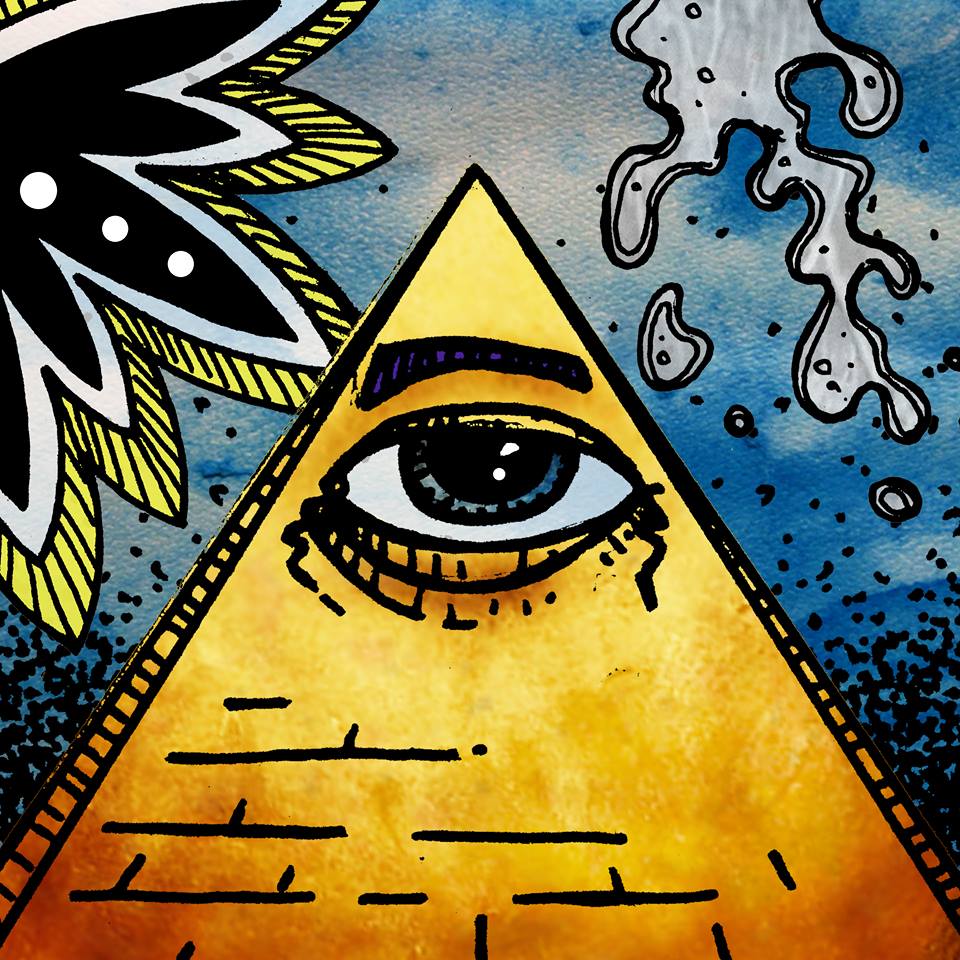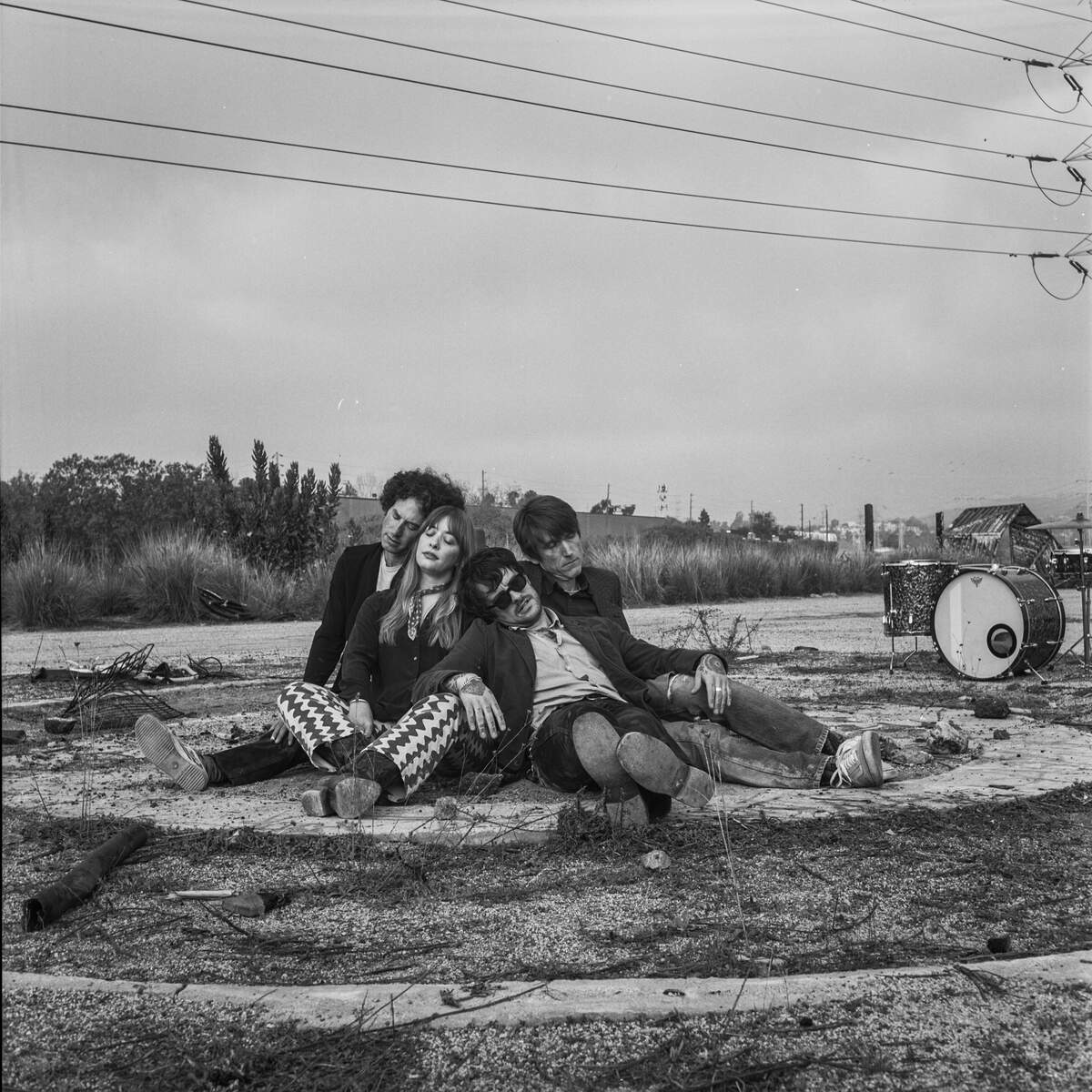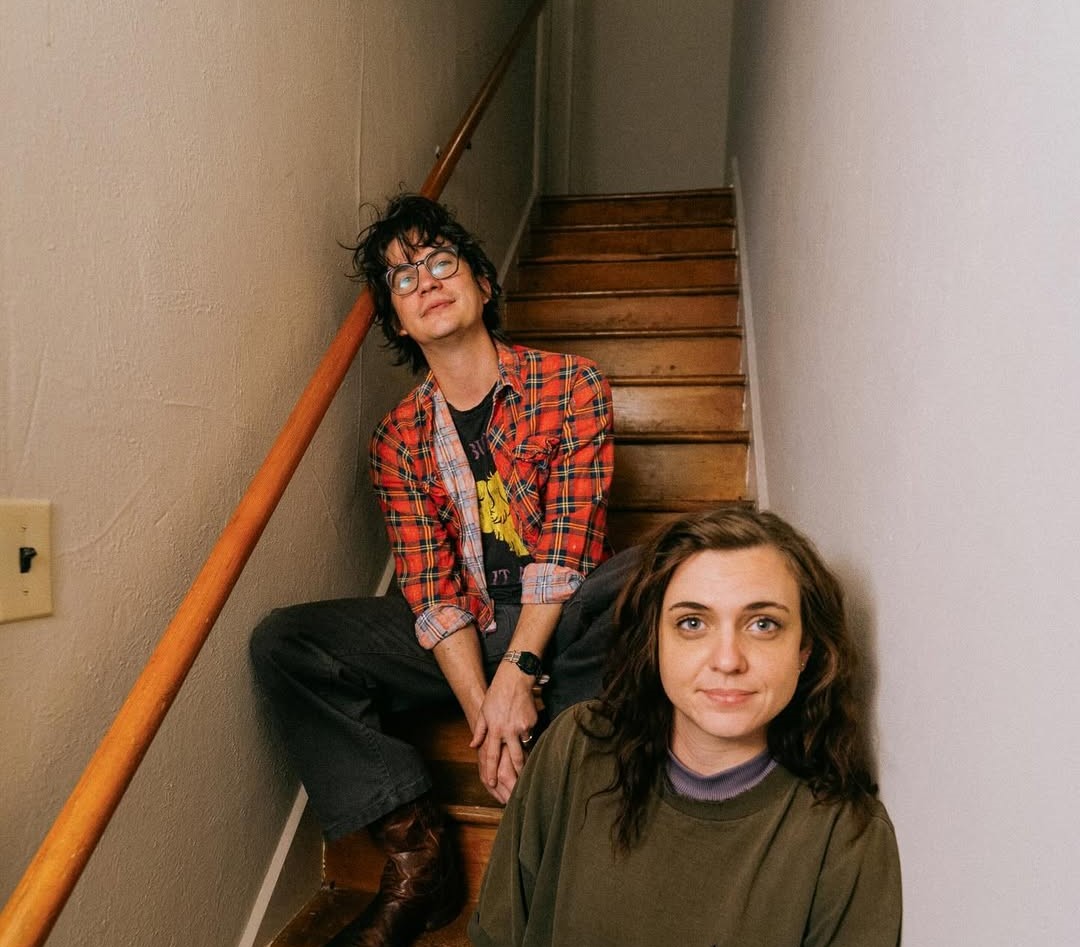Orkan on Protest, Folklore, and Finding Freedom in ‘Vakendrömmar’
The Swedish progressive rock of the 1970s, often called “progg,” was a genre of two minds: pastoral beauty and radical politics. Its classic albums are considered snapshots of a specific time, but with Vakendrömmar (or “dreaming while you’re awake”), the band Orkan has done much more than just rehash a vintage sound.
They have created something unsettling and profoundly new for the form. This album feels less like a shared experience and more like an internal, solitary descent into a shared subconscious. The approach is perfectly captured by its title, which suggests a state of restless, half-lucid awareness. Musically, Orkan pulls from the past, taking the dense motifs of an artist like Bo Hansson and the rhythmic complexity of more experimental progg bands, then somehow reassembling them into something unnervingly new.
The journey begins with a disorienting introduction, marked by a heavy, lumbering riff and distorted vocals. This is not lighthearted music. Instead, Orkan builds their sound with hypnotic passages that evolve from sparse, droning motifs into full-blown crescendos of guitars and drums, creating a powerful wall of sound. The band’s command of dynamics and their arrangements feel on par with their progg predecessors.
Ultimately, what makes ‘Vakendrömmar’ so gripping is its architecture. It is a challenging but deeply rewarding listen, demanding attention and revealing new layers with each repeat.
‘Vakendrömmar’ is a daring journey between the edges of perception and reverie, moving from the hypnotic undulations of ‘Vågorna’ to the intensity of ‘Ytan’ and ‘Ohyra,’ and the dreamlike expanses of ‘Symfoni’ and ‘Tröst.’ Rooted in 70s Swedish progg, Orkan confronts struggle, freedom, and resistance through the enigmatic figure of the “mare.” The album intertwines the intimate and the political, bending rhythm, harmony, and silence into unexpected forms. This is an unsettling, meditative, and fiercely alive piece of record.
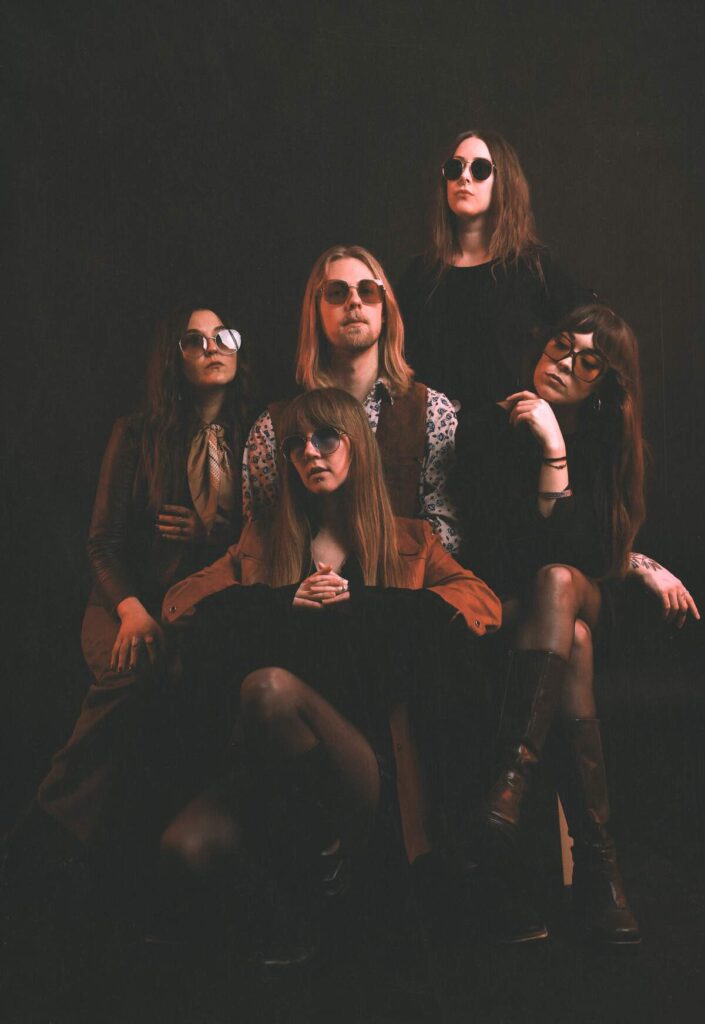
“The mare is a symbol for many different kinds of struggles”
‘Vågorna’ is an incredible opening statement. It’s not the thunderous kick-off one might expect, but a hypnotic, almost disorienting wave. Was it a conscious decision to start the album with a track that pulls the listener into the unknown rather than a more typical anthem, and how does this set the stage for the dreamscape of ‘Vakendrömmar’? You’ve described the album as inhabiting the “shadowy border between reality and hallucination.” Can you walk me through the conscious and subconscious choices you made in sequencing the album to guide the listener deeper into that liminal space?
Orkan: Deciding the exact order of songs for an album can be a bit tricky sometimes. To open the album with a track like ‘Vågorna’ is maybe not an obvious choice, since it’s not really like any other song we have recorded so far. But then again, the songs on the album all reach for quite different moods and styles, and to really pull the listener into this world of different sounds and feelings, what better way than to start it all off with naked drums and build it up from there? The instrumental section in the middle of the song is perhaps one of the more intense parts of the whole album, which also gives a taste of the energy contained in some of the other tracks, like the following ‘Ytan’ and ‘Ohyra.’ These two songs are closer to the typical Orkan songs everyone knows and loves, with a shuffle beat and riffing guitar harmonies.
After these rockers, we felt that the two softer tracks ‘Symfoni’ and ‘Tröst’ would fit perfectly as an end to the first half of the record. ‘Tröst’ starts off very intimate, with the pedal steel from the previous song still living its life in the background. It builds up and then fades away again, and it was very much a conscious choice to let this song end the first half, to give room for the more upbeat following songs. The mostly instrumental ‘Sanningen om spöket’ is maybe the oddest one, and was given a place near the end to wake you up and prove you wrong if you think that you’re starting to know what’s going on all too well. The final song ‘Vem bryr sig?’ is the longest song on the album, and the chaotic guitar solo at the end seemed too hard to continue after, so we let it have the final word.
The figure of the “mare” in Swedish folklore is a potent metaphor. It’s an internal struggle made manifest, an external force that forces you to confront your darkest thoughts. Given that your lyrics have always been fiercely political and personal, how did this folkloric figure become a lens through which you explored themes of protest, hope, and resistance on this album? What are the “mares” that are sitting on Sweden’s chest, and how do you believe the themes of ‘Vakendrömmar’ serve as a form of collective exorcism or confrontation?
The mare is a symbol for many different kinds of struggles, just as you are suggesting, and is meant to be interpreted in whatever way the listener wants (or doesn’t want). It can be a metaphor for both an external and an internal force, for example your subconsciousness trying to remind you of what is important, or us trying to inspire you to open your eyes to the struggles around you. In ‘Ohyra’ (Unrent/Vermin), the mare wants you to think about the paradoxicality of the meaning of “freedom” according to a neoliberal point of view. In ‘Vem Bryr Sig’ (Who Cares?) the mare is urging you to live as if you care about the hardship of your fellow humans, and in ‘Symfoni’ (Symphony) she simply wants to remind you of how it feels when loving your people feels easy. The mare is an obvious metaphor for what we have always done and continue to do, but there is no real story about how she came to be that. She just kind of showed up!
Your sound is rooted in the 70s progg movement, a time when music was an intrinsic part of social and political change. Yet, your work feels incredibly relevant today. Beyond the sonic homage, what do you believe is the most crucial, and perhaps overlooked, lesson from that era of Swedish music that you’ve carried into the present? What does “protest” sound like in 2025? Is it something more nuanced, like the unsettling quiet of ‘Den som sover ska få se?’
The most important lesson from Swedish 70s prog is about lyrics and how we can express ourselves through lyrics to convey struggles both in society and within ourselves. That’s what we’ve taken to heart the most, to write about something that matters, to dare to criticize and question. On our first album we talked broadly about injustice in a larger perspective where we liked to use words like “we and us.” But over time we’ve also learned to look inward and become more personal in our lyrics. Dare to use words like “I” and to also focus on inner struggles that we think our listeners can relate to. ‘Vakendrömmar’ is such an album, a slightly more personal album about dreams and nightmares.
Swedish prog has often been rooted in Sweden’s left-wing politics and in an ideology about everyone’s equal value and about reducing social gaps. It highlights the importance of standing together in a society that rather tries to divide us. Protests against injustice are as relevant today as they were in the 70s, which is painfully evident considering the genocide that is currently happening in Gaza. The “sound of protest” is always going to be different expressions of the same core.
Taking control with Blåsväder Records is a significant move. You’ve said this marks a new chapter “not only musically but in spirit.” What creative or spiritual freedoms did this independence unlock? Can you pinpoint a specific moment during the creation of ‘Vakendrömmar’ where this newfound autonomy allowed you to take a risk you wouldn’t have before, whether it was a lyrical theme, a sonic experiment, or a structural choice?
We have never limited ourselves musically or written our songs in a different way just because we were signed to a record label. Writing what we want and how we want and being completely free in that creation has always been a priority. We have never tried to fit into a box in that way. Being able to take musical risks is a big part of the fun of writing music. It just kind of felt like a natural next step right now to start our own record label, it almost felt strange that we had not done it before considering what our processes look like. But it does require a not insignificant amount of knowledge and confidence that we probably hadn’t had until now. Having the opportunity to release your album on your own record label is a very special feeling, and one that we do not take for granted.
Let’s talk about the instrumentation and arrangement. On ‘Vakendrömmar,’ there’s a tangible sense of space and texture, almost a cinematic quality, particularly in tracks like “Symfoni.” How did you approach crafting these? Was there a deliberate effort to use sound itself to evoke the feeling of a dream, the way sounds can warp and fade in a hallucination?
The arrangements and sounds in our songs always begin to take form from the first time we start trying to play the song together. Maybe one of us has a vision for the song, but we craft each song carefully by playing it over and over and trying out different things together. We try to get as close to the sound we are after as possible when we are rehearsing and playing the songs live, and then adding the final pieces that are missing in the studio.
The title ‘Vakendrömmar’ (waking dreams) is a beautiful contradiction. It suggests a state of heightened awareness, where the subconscious bleeds into reality. As artists, how do you navigate this space between the personal and the collective, especially with lyrics that are both introspective and politically charged? How do you take a personal waking dream and turn it into a universal rallying cry for your listeners?
This is a beautifully formulated question! And the beautiful thing about music and lyrics is that they are written in a way that allows for personal thoughts and experiences to be related to by complete strangers. A song can be personal for both the writer and the listener, because no one can tell you that you are interpreting it in the wrong way. And when it comes to the intersection between the political and personal aspects, we would honestly say that this is a very natural connection to navigate. The way we see it, politics and personal lives can never be separated when you live in a society like ours. We are constantly affected by political decisions in our everyday lives, but it is usually only those who suffer negative consequences that are reminded of this. So in a way, our songs are just personal stories told from a larger perspective.
For a band that has played nearly 200 stages, the studio process must be a fascinating challenge. How do you capture the live, “hurricane-force” energy of Orkan within the structured environment of a recording studio?
The main way we keep the live feeling is through recording it live, meaning that we record all instruments at once. We usually have the songs in our live show setlists for some time before we record them, and that way we’re basically just going into the studio and recording a take where we play the song together just like we do when it is in front of an audience. The studio environment is important too. Both Welfare studio and Nacksving studio (where we recorded our two previous records) are very cool and inspiring environments.
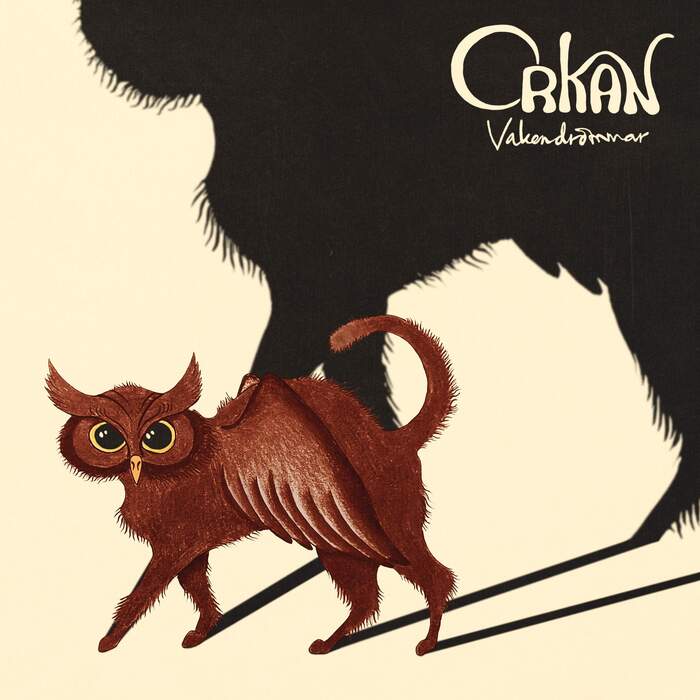
Looking beyond this album, what’s next? Having explored the shadowy border between dream and reality, where do you see the next chapter of the Orkan story taking you?
We’ve already started to work on some new songs for the next album. It’s going to be exciting to see where it ends up, because this time we’re writing absolutely everything together in the rehearsal space, even the lyrics. We’re definitely still exploring the dreamy vibe that ‘Vakendrömmar’ has, but maybe with a harder sound to it. But we’ve only written a few songs so far, so who knows how it will turn out!
Klemen Breznikar
Orkan Website / Facebook / Instagram / YouTube
